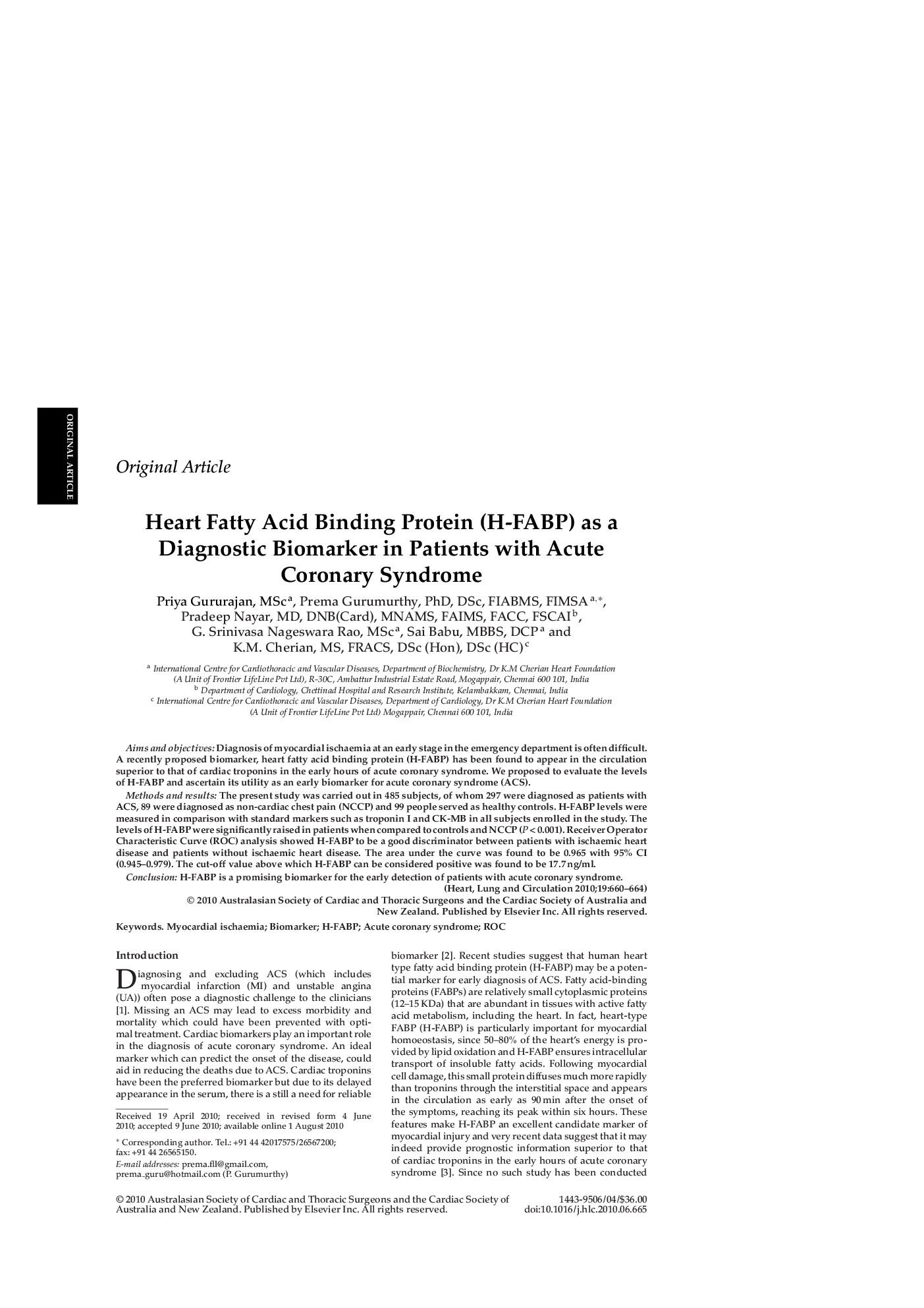| Article ID | Journal | Published Year | Pages | File Type |
|---|---|---|---|---|
| 2919645 | Heart, Lung and Circulation | 2010 | 5 Pages |
Aims and objectivesDiagnosis of myocardial ischaemia at an early stage in the emergency department is often difficult. A recently proposed biomarker, heart fatty acid binding protein (H-FABP) has been found to appear in the circulation superior to that of cardiac troponins in the early hours of acute coronary syndrome. We proposed to evaluate the levels of H-FABP and ascertain its utility as an early biomarker for acute coronary syndrome (ACS).Methods and resultsThe present study was carried out in 485 subjects, of whom 297 were diagnosed as patients with ACS, 89 were diagnosed as non-cardiac chest pain (NCCP) and 99 people served as healthy controls. H-FABP levels were measured in comparison with standard markers such as troponin I and CK-MB in all subjects enrolled in the study. The levels of H-FABP were significantly raised in patients when compared to controls and NCCP (P < 0.001). Receiver Operator Characteristic Curve (ROC) analysis showed H-FABP to be a good discriminator between patients with ischaemic heart disease and patients without ischaemic heart disease. The area under the curve was found to be 0.965 with 95% CI (0.945–0.979). The cut-off value above which H-FABP can be considered positive was found to be 17.7 ng/ml.ConclusionH-FABP is a promising biomarker for the early detection of patients with acute coronary syndrome.
